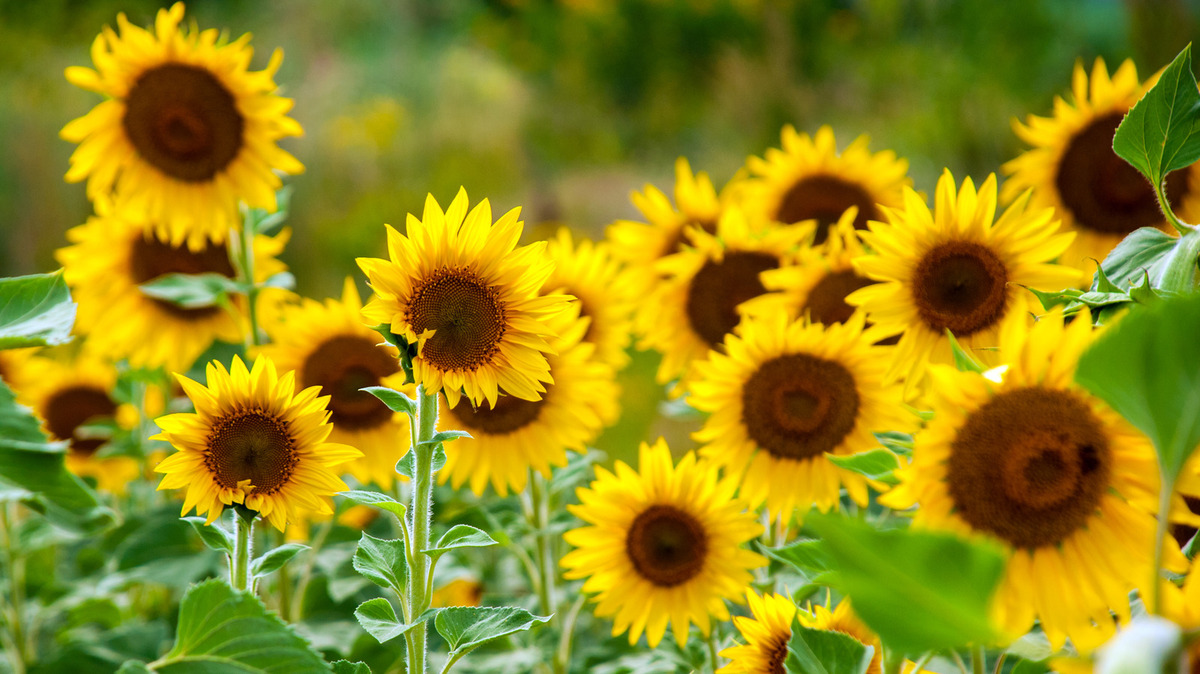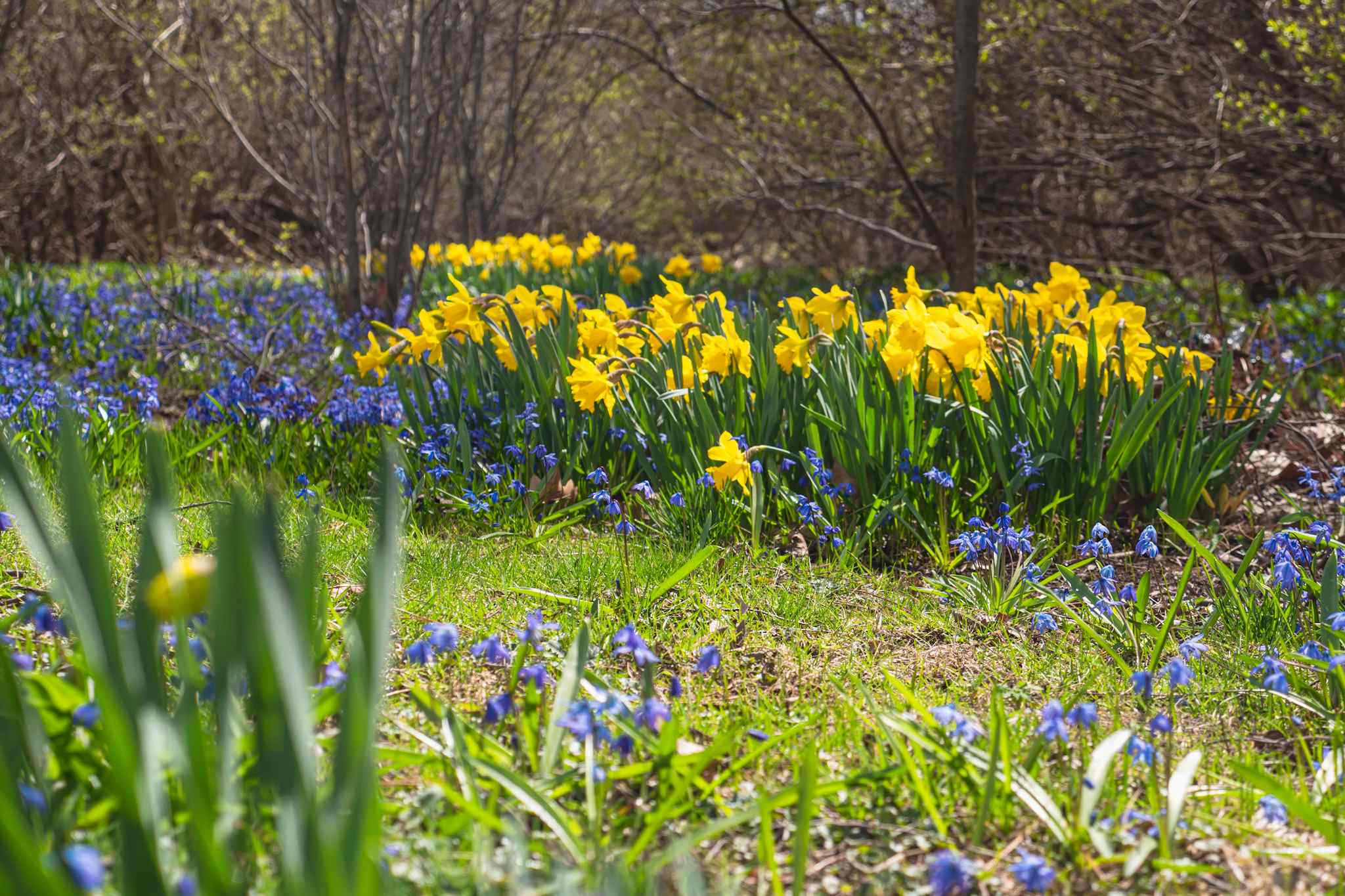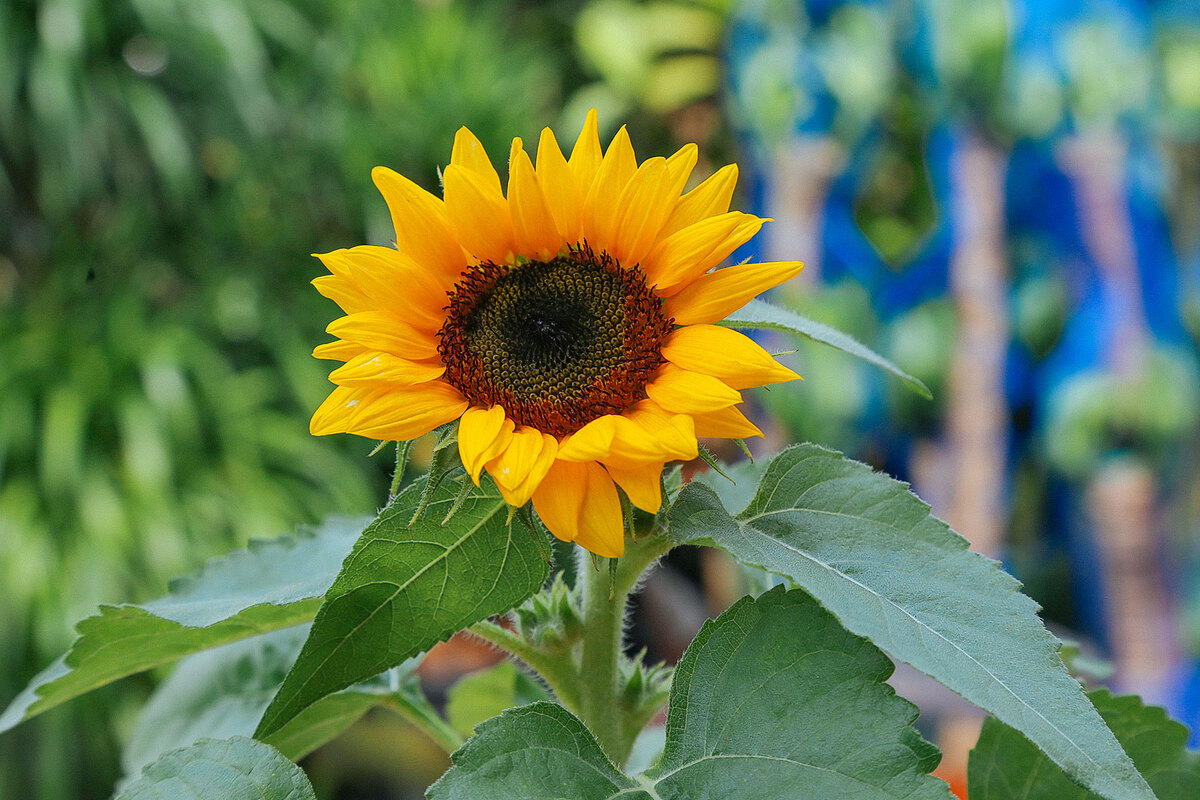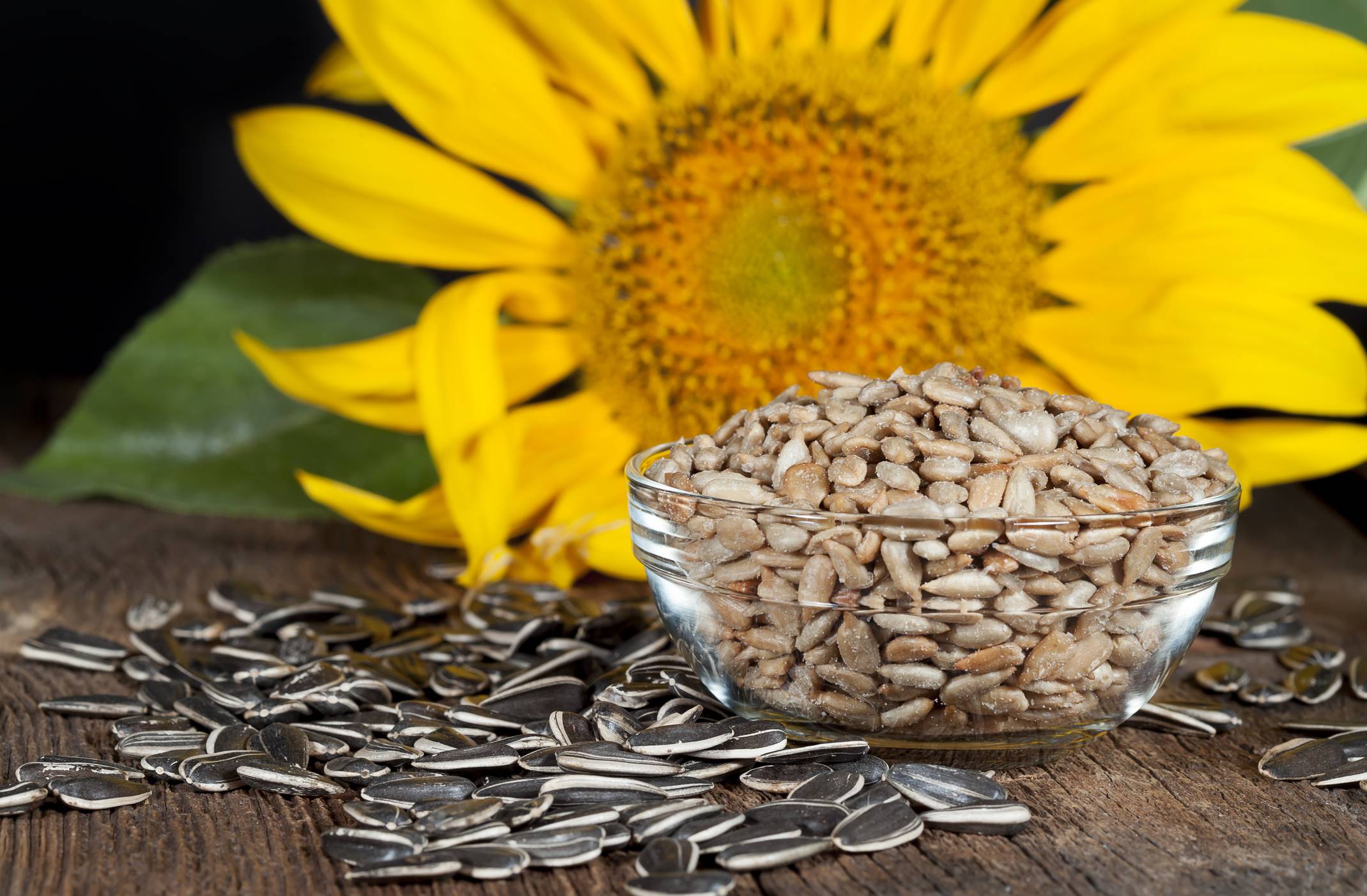Home>Types of Gardening>Ornamental Gardening>When To Plant Sunflowers In Michigan
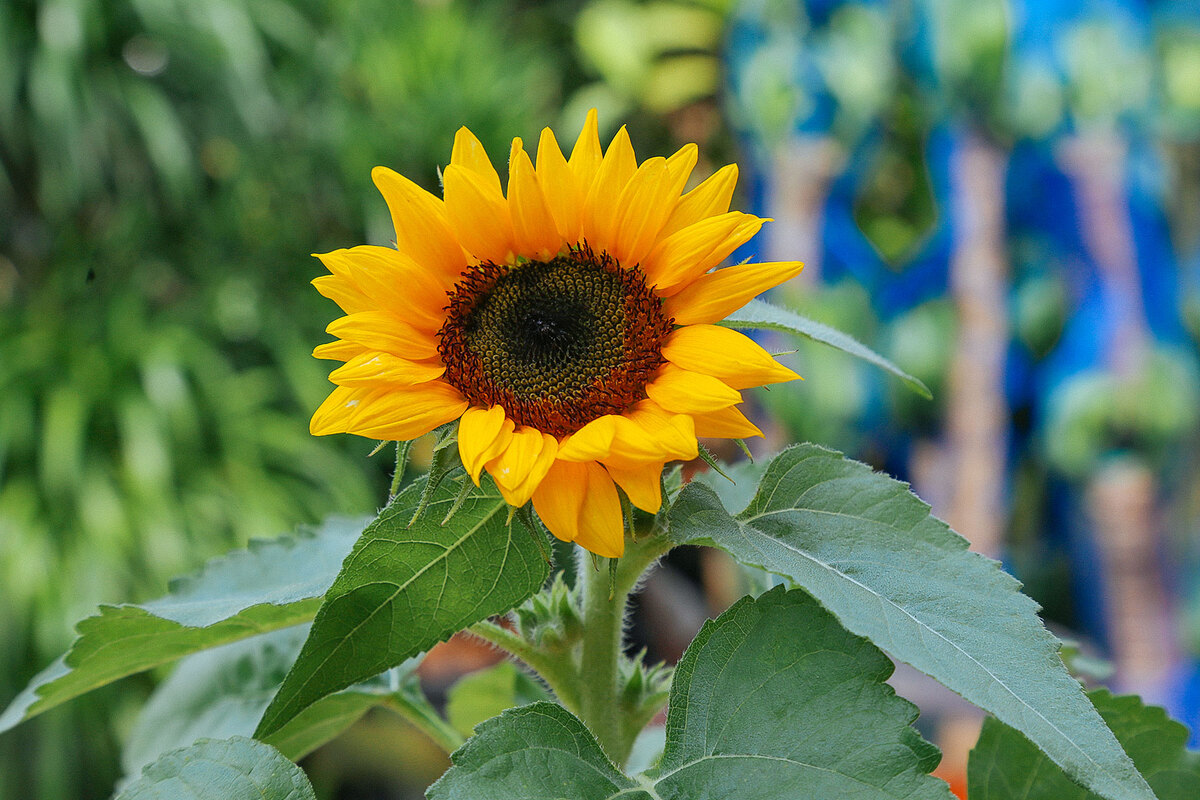

Ornamental Gardening
When To Plant Sunflowers In Michigan
Modified: January 22, 2024
Discover the best time to plant sunflowers in Michigan for your ornamental gardening needs. Increase your chances of success with our helpful tips and guidance.
(Many of the links in this article redirect to a specific reviewed product. Your purchase of these products through affiliate links helps to generate commission for Chicagolandgardening.com, at no extra cost. Learn more)
Table of Contents
- Introduction
- Factors to Consider When Planting Sunflowers
- Best Time to Plant Sunflowers in Michigan
- Tips for Planting Sunflowers in Michigan
- Sunflower Varieties for Michigan
- How to Care for Sunflowers in Michigan
- Harvesting and Storing Sunflower Seeds in Michigan
- Common Pests and Diseases for Sunflowers in Michigan
- Conclusion
Introduction
Welcome to the wonderful world of ornamental gardening! If you have a passion for adding beauty and vibrancy to your outdoor spaces, then ornamental gardening is the perfect hobby for you. One aspect of ornamental gardening that can truly elevate your garden’s aesthetic appeal is the inclusion of stunning sunflowers.
Sunflowers, with their large, vibrant blooms and tall, commanding presence, are undoubtedly a showstopper in any garden. Whether you’re looking to create a stunning focal point or add some cheerful color to your existing flowerbeds, sunflowers are a fantastic choice. In this article, we will explore the optimal time to plant sunflowers in the beautiful state of Michigan, as well as provide you with some useful tips and tricks to help you successfully grow and care for them.
Michigan, known for its diverse climate and fertile soil, offers an excellent environment for growing sunflowers. However, it’s important to understand the factors that come into play when deciding on the best time to plant sunflowers and how to ensure their success.
Factors to Consider When Planting Sunflowers
Before planting sunflowers in your Michigan garden, there are several factors you should consider to ensure optimal growth and success. These factors include:
- Soil Quality: Sunflowers thrive in well-draining soil that is rich in organic matter. Before planting, test the soil pH and make any necessary amendments to ensure it falls within the ideal range of 6.0 to 7.5.
- Sunlight: Sunflowers, as the name suggests, require ample sunlight to grow and bloom to their fullest potential. Choose a location that receives at least 6 to 8 hours of direct sunlight per day for the best results.
- Spacing: Sunflowers have large, spreading root systems and can grow tall, so it is important to provide them with enough space to thrive. Plant the seeds or transplants at least 18 to 24 inches apart, allowing for proper air circulation and reducing the risk of disease.
- Watering: While sunflowers are relatively drought-tolerant once established, they still require regular watering, especially during dry spells. It is important to water deeply and infrequently, ensuring the soil is moist but not waterlogged.
- Temperature: Sunflowers are warm-season plants and prefer temperatures between 70 to 78°F (21 to 26°C). Plant your sunflowers when the threat of frost has passed, typically in late spring or early summer in Michigan.
By taking these factors into consideration, you can create an ideal environment for your sunflowers to thrive, resulting in healthy plants and beautiful blooms.
Best Time to Plant Sunflowers in Michigan
The best time to plant sunflowers in Michigan is during the late spring, typically between mid-May and early June. This timing ensures that the soil has warmed up sufficiently and the threat of frost has passed, providing optimal conditions for sunflower growth.
Sunflowers are warm-season plants and thrive in temperatures between 70 to 78°F (21 to 26°C). By planting them during the late spring, you can take advantage of the warmer temperatures and longer daylight hours, which are essential for their growth and development.
It’s important to note that sunflowers are not frost-tolerant, so it’s crucial to wait until all danger of frost has passed before planting the seeds or transplants. This typically occurs in Michigan around mid to late May, depending on your location within the state.
When selecting your sunflower seeds or transplants, consider the maturity time indicated on the packet or plant tag. This will help you choose varieties that will reach maturity before the first frost in the fall, ensuring that you can enjoy their beautiful blooms.
Keep in mind that sunflowers are fast-growing plants, and they tend to bloom about 70 to 90 days after planting. By planting them in late spring, you can expect to see their vibrant flowers in full bloom during the summer months, adding a burst of color to your garden.
If you prefer to have a continuous display of sunflowers throughout the summer, you can stagger your planting by sowing seeds every two to three weeks until early summer. This will result in a succession of blooming sunflowers, prolonging the enjoyment of their beauty.
Overall, late spring is the best time to plant sunflowers in Michigan, allowing for optimal growth and ensuring that you can enjoy their stunning blooms throughout the summer season.
Tips for Planting Sunflowers in Michigan
Planting sunflowers in your Michigan garden can be a rewarding experience. To maximize their growth and ensure a successful harvest, here are some tips to keep in mind:
- Choose the Right Variety: Select sunflower varieties that are well-suited for the Michigan climate. Some popular varieties for the region include ‘Autumn Beauty,’ ‘Mammoth Grey Stripe,’ and ‘Teddy Bear.’ These varieties are known to thrive in Michigan’s growing conditions.
- Prepare the Soil: Sunflowers prefer well-draining soil that is rich in organic matter. Before planting, loosen the soil and remove any weeds or debris. Incorporate compost or well-rotted manure into the soil to improve its fertility and drainage.
- Planting Depth: Sunflower seeds should be planted at a depth of 1 to 2 inches (2.5 to 5 cm) in the soil. If sowing multiple seeds, space them at least 6 to 12 inches (15 to 30 cm) apart to allow adequate room for growth.
- Watering: While sunflowers are drought-tolerant, it is important to provide them with regular watering, especially during dry spells. Water deeply, ensuring the soil is moist but not waterlogged. Avoid overhead watering, as it can increase the risk of disease.
- Supporting Tall Varieties: If you are planting tall sunflower varieties, consider providing them with support to prevent them from bending or falling over. Use stakes or a trellis to support the plants as they grow, ensuring they can withstand wind and heavy rain.
- Protect from Pests: Sunflowers can attract pests like birds, squirrels, and insects. To protect your sunflowers, consider using netting or scare devices to deter birds and animals. Monitor the plants for any signs of insect damage and use organic pest control methods if necessary.
- Deadheading Blooms: To encourage continuous blooming, regularly deadhead or remove faded blooms. This will redirect the plant’s energy towards producing new flowers, keeping your garden vibrant and colorful throughout the season.
- Harvesting Seeds: If you are growing sunflowers for their seeds, allow the flower heads to mature and dry on the plant. Once the back of the flower head turns brown and the seeds feel firm, cut the heads and hang them in a cool, dry location to further dry. Rub the heads to remove the seeds and store them in airtight containers for future use.
By following these tips, you can ensure that your sunflowers thrive in your Michigan garden, providing you with beautiful blooms and, if desired, a bountiful harvest of sunflower seeds.
Sunflower Varieties for Michigan
Michigan’s climate offers a wide range of conditions for growing sunflowers, making it an ideal location for cultivating various sunflower varieties. Here are some popular sunflower varieties that are well-suited for Michigan gardens:
- Autumn Beauty: This variety is known for its stunning mix of colors, ranging from deep reds and yellows to vibrant oranges. The flowers bloom in various sizes, creating a beautiful display of autumn-inspired hues in your garden.
- Mammoth Grey Stripe: Mammoth Grey Stripe sunflowers are well-known for their large, showy flower heads and tall stature. These varieties can grow up to 12 feet tall and produce massive flower heads filled with tasty seeds. They are a favorite among gardeners and are often grown for their ornamental and edible purposes.
- Teddy Bear: Teddy Bear sunflowers are a popular choice for their unique appearance. With their fluffy, double-petaled golden blooms, they resemble fluffy teddy bears, hence the name. These compact sunflowers typically reach a height of about 2 to 3 feet, making them a great choice for smaller gardens or containers.
- Sunspot: Sunspot sunflowers are a dwarf variety that typically reaches a height of about 2 to 3 feet. What makes them special is their large, single, bright yellow flower heads. They are great choices for adding a pop of color to a sunny spot in your garden or as a border plant along walkways.
- Lemon Queen: Lemon Queen sunflowers brighten up any garden with their lemon-yellow petals and dark centers. They grow to about 5 to 7 feet tall and produce multiple flower heads on each stalk. Their sunny disposition and delightful fragrance make them a favorite among gardeners and pollinators alike.
These sunflower varieties have proven to perform well in Michigan’s climate and are widely available at local nurseries and garden centers. Experimenting with different varieties can add a range of colors, heights, and shapes to your garden, creating a visually stunning display of sunflowers.
Remember to read the seed packets or plant tags for specific planting and care instructions for each sunflower variety. With proper care and a touch of creativity, you can enjoy a diverse and magnificent sunflower garden in Michigan.
How to Care for Sunflowers in Michigan
Caring for sunflowers in your Michigan garden is relatively easy, but there are some important steps to follow to ensure their health and vitality. Here are some essential care tips:
- Watering: While sunflowers are relatively drought-tolerant, they still require regular watering. Water deeply, ensuring the soil is moist but not waterlogged. Aim to provide about 1 inch of water per week, either through rainfall or supplemental irrigation.
- Fertilizing: Sunflowers are not heavy feeders, but applying a balanced, slow-release fertilizer during planting can help give them a nutrient boost. Alternatively, you can top-dress the soil around the base of the plants with compost or well-rotted manure to provide additional nutrients throughout the growing season.
- Supporting Tall Varieties: If you are growing tall sunflower varieties, such as ‘Mammoth Grey Stripe,’ it’s important to provide them with support. Use stakes or a trellis to prevent the plants from bending or toppling over during strong winds or heavy rain.
- Pruning: Sunflowers generally do not require much pruning. However, if you notice any damaged or diseased leaves or flower heads, it is advisable to remove them promptly to prevent the spread of disease and maintain the plant’s overall health.
- Staking: If you experience strong winds in your area, consider staking your sunflowers for added stability. Install stakes around each sunflower plant and use soft ties or twine to gently secure the stems to the stakes, preventing them from swaying excessively.
- Mulching: Apply a layer of organic mulch, such as straw or wood chips, around the base of the sunflowers to help retain moisture, suppress weeds, and regulate soil temperature. Keep the mulch a few inches away from the stems to prevent rotting.
- Monitoring for Pests and Diseases: Regularly inspect your sunflowers for any signs of pests or diseases. Common pests include aphids, caterpillars, and birds. If you notice any issues, use appropriate organic pest control methods or consult with a local garden center for advice.
- Supporting Pollinators: Sunflowers are not only beautiful but also attract pollinators like bees and butterflies. To create a pollinator-friendly garden, avoid using herbicides or pesticides that may harm these beneficial insects.
By following these care guidelines, you can help ensure that your sunflowers in Michigan thrive and provide a spectacular display of vibrant blooms throughout the summer months. Enjoy the beauty they bring and the joy they bring to your garden.
Harvesting and Storing Sunflower Seeds in Michigan
Harvesting and storing sunflower seeds is a delightful part of growing sunflowers in your Michigan garden. Here’s a step-by-step guide to help you make the most of your sunflower harvest:
- Observing Maturity: Wait until the back of the sunflower’s flower head turns brown and the seeds feel firm to the touch. This indicates that the seeds are mature and ready for harvesting.
- Harvesting the Flower Heads: Cut or snap off the mature flower heads from the stalk. Leave a few inches of stem attached to the flower head for easier handling.
- Drying: Hang the flower heads in a well-ventilated, dry area such as a garage or shed. Ensure that the heads are hung upside down to allow the seeds to dry naturally. As the heads dry, the seeds will loosen and become easier to remove.
- Removing the Seeds: Once the flower heads are completely dry, rub them gently with your hands or use a fork to remove the seeds. The seeds will easily detach from the seed head and collect in a bowl or container.
- Winnowing: After removing the seeds from the flower heads, you may notice small bits of debris and dried flower petals mixed with the seeds. To separate them, use a fan or create a light breeze by pouring the seeds from one container to another outdoors. The lighter debris will blow away, leaving you with clean sunflower seeds.
- Storing the Seeds: Store the harvested sunflower seeds in airtight containers, such as glass jars or plastic bags, in a cool, dry place. Make sure to label the containers with the sunflower variety and the date of harvest.
- Enjoying the Harvest: Sunflower seeds can be used for various purposes, including roasting, snacking, or as bird feed. Experiment with different flavors and seasonings to create a delicious and nutritious snack or simply save them for future planting.
Harvesting and storing sunflower seeds not only provides you with a valuable yield but also allows you to enjoy the fruits of your labor throughout the year. Whether you choose to use them for culinary purposes or save them for future planting, the harvested sunflower seeds are certainly a delightful reward from your Michigan garden.
Common Pests and Diseases for Sunflowers in Michigan
While sunflowers are generally durable and resilient plants, they can still fall victim to certain pests and diseases in Michigan. Being aware of these common issues can help you identify and address them promptly. Here are some of the most common pests and diseases that affect sunflowers in Michigan:
- Aphids: Aphids are small, soft-bodied insects that feed on the sap of sunflower plants. They can cause stunted growth, distorted leaves, and honeydew residue. Use insecticidal soap or a strong stream of water to remove aphids from the plants, and encourage beneficial insects like ladybugs and lacewings, which feed on aphids.
- Cutworms: Cutworms are caterpillars that may chew through sunflower stems near the soil surface, causing the plants to topple over. Protect young sunflower seedlings by placing collars or barriers around the base of the plants to prevent cutworm infestation.
- Sunflower Beetles: Sunflower beetles feed on the leaves, causing skeletonization or holes. Handpick and remove any visible beetles from the plants. Consider using insecticidal soap or organic insecticides if the infestation is severe.
- Downy Mildew: Downy mildew is a fungal disease that affects the leaves, causing yellowing, curling, and a fuzzy, grayish coating on the undersides. Opt for resistant sunflower varieties, provide proper air circulation, and avoid overhead watering to minimize the spread of downy mildew.
- Powdery Mildew: Powdery mildew is a common fungal disease that appears as a white, powdery coating on the leaves and stems. Trim off any affected foliage, improve air circulation, and consider applying organic fungicides to prevent the spread of powdery mildew.
- Gray Mold: Gray mold, also known as Botrytis, causes a grayish-brown fuzzy growth on the flower heads and can lead to decay. To prevent gray mold, ensure proper air circulation, avoid overcrowding plants, and remove any infected flower heads promptly.
- Birds: Birds, particularly finches, can be attracted to sunflower seeds. While they may not harm the plants themselves, they can damage the flower heads and consume the seeds. Consider using bird netting or scare tactics such as reflective tape or scarecrows to discourage bird feeding.
Vigilance is key when it comes to pest and disease management. Regularly inspect your sunflowers for any signs of pest infestation or disease development. Early detection and appropriate action can help prevent the spread of pests and diseases, ensuring the health and vitality of your sunflowers in Michigan.
Conclusion
Growing sunflowers in your Michigan garden can be a rewarding and enjoyable experience. By considering the factors that influence sunflower growth, such as soil quality, sunlight, spacing, watering, and temperature, you can create an ideal environment for these vibrant blooms to thrive.
Planting sunflowers in late spring, when the threat of frost has passed, ensures optimal growth and abundant blooms during the summer months. Choosing the right sunflower varieties, such as Autumn Beauty, Mammoth Grey Stripe, Teddy Bear, Sunspot, or Lemon Queen, adds a burst of color and variety to your garden.
Caring for sunflowers in Michigan involves providing adequate water and light, supporting tall varieties, monitoring for pests and diseases, and following proper pruning and maintenance practices. Harvesting and storing sunflower seeds allows you to enjoy not only the beauty of the flowers but also the delicious and nutritious seeds for snacking or future planting.
While sunflowers may encounter common pests like aphids, cutworms, and sunflower beetles, as well as diseases like downy mildew and powdery mildew, prompt identification and appropriate action can help mitigate these issues and ensure the overall health of your sunflowers.
So, whether you’re looking to beautify your garden, attract pollinators, or simply enjoy the cheerful presence of sunflowers, following these tips and guidelines will help you create a stunning sunflower display in your Michigan garden.
Embrace the joy and beauty that sunflowers bring, and relish in the satisfaction of nurturing these magnificent plants from seed to bloom. Happy gardening!



